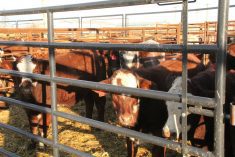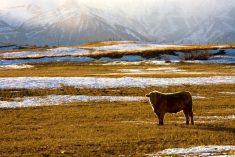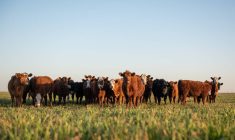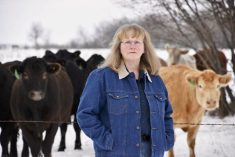The U.S. Department of Agriculture’s National Agricultural Statistics Service released the much-anticipated “Cattle” report on Feb 1.
The semi-annual inventory report confirmed what many cattle market observers had expected: The record-setting drought in the southern Plains in 2011 that expanded into much of the country, including the Corn Belt in 2012, caused lower cattle numbers.
All cattle and calves in the U.S. on Jan. 1 totalled 89.3 million head, which is 1.6 per cent below the 90.8 million on Jan. 1, 2012. This was the lowest Jan. 1 inventory of all cattle and calves since the 88.1 million head in 1952.
Read Also

Pig transport stress costs pork sector
Popular livestock trailer designs also increase pig stress during transportation, hitting at meat quality, animal welfare and farm profit, Agriculture and Agri-Food Canada researcher says
However, it should be noted that beef production totalled 25.9 billion pounds in 2012, compared with just 9.3 billion in 1952. The near 26 billion pounds in 2012 is just less than the record 27 billion pounds produced in 2002, so the beef industry produces much more beef with the same number of cattle that existed in the 1950s.
Beef cows in the U.S., at 29.3 million head, were down almost three per cent from the previous year. By far, Texas is the leading beef cow state, with more than 4.01 million cows on Jan. 1. Compare that to second-place Nebraska at 1.81 million beef cows. The number of beef cows in Texas was down 12 per cent on Jan. 1, compared with 2012. This was down nine per cent from the previous year as well, for a total two-year decline of more than a million head. Beef cows in Nebraska declined four per cent from last year. Beef cow numbers in third-place Missouri were down five per cent and fourth-place Oklahoma lost one per cent. All of those states were hard hit by drought conditions.
In contrast, northern states that were not as severely affected with drought saw increasing beef cow numbers. Minnesota, North and South Dakota, Montana, Idaho and Washington combined for a 243,000-head increase in beef cows.
Interest in herd rebuilding was evident where moisture conditions allowed it. Another indication of that interest was that heifers of more than 500 pounds that were kept for beef cow replacements in the U.S. were up 1.9 per cent. Again, several of those same northern states showed increases. Even Texas, where drought conditions improved in some areas, recorded a nine per cent increase.
This was the second year in a row of increased beef cow replacements in the U.S. Even though replacements were higher than on Jan. 1, 2011, and 2012, the 2013 numbers still were lower than any other year since 1990.
Surge in North Dakota
Contrast beef replacement heifers in the U.S. with North Dakota, where historically high numbers were recorded the last three years. In fact, the 207,000 replacement heifers in North Dakota on Jan. 1 were the highest since 1974 and the fourth highest since records began in 1920.
The inventory of all cattle and calves in North Dakota on Jan. 1 was up almost six per cent, beef cow numbers rose seven per cent and milk cows stayed the same. There were more calves being backgrounded in the state than last year, led by an increase of 2.5 per cent in other (non-replacement) heifers, but cattle on feed for the slaughter market declined.
The 2012 U.S. calf crop was estimated at 34.3 million head, which was down three per cent from 2011. However, the combined total of calves less than 500 pounds and other steers and heifers at more than 500 pounds outside of feedlots was up almost one per cent. This was due to lower placements into feedlots the last several months. Cattle and calves on feed for slaughter in U.S. feedlots, at 13.4 million head, were down about 5.5 per cent.
Weather will continue to be a wild card in cattle prices and numbers. Much of the central U.S., including a number of important beef cattle-producing states, is very dry. Seasonally high calf prices in the spring are dependent on the potential for good grass conditions. Dry pastures in the U.S. will need sufficient rain to prevent further cow liquidation.
Corn supplies are historically tight, so a good corn crop also is necessary to support feeder cattle prices.


















